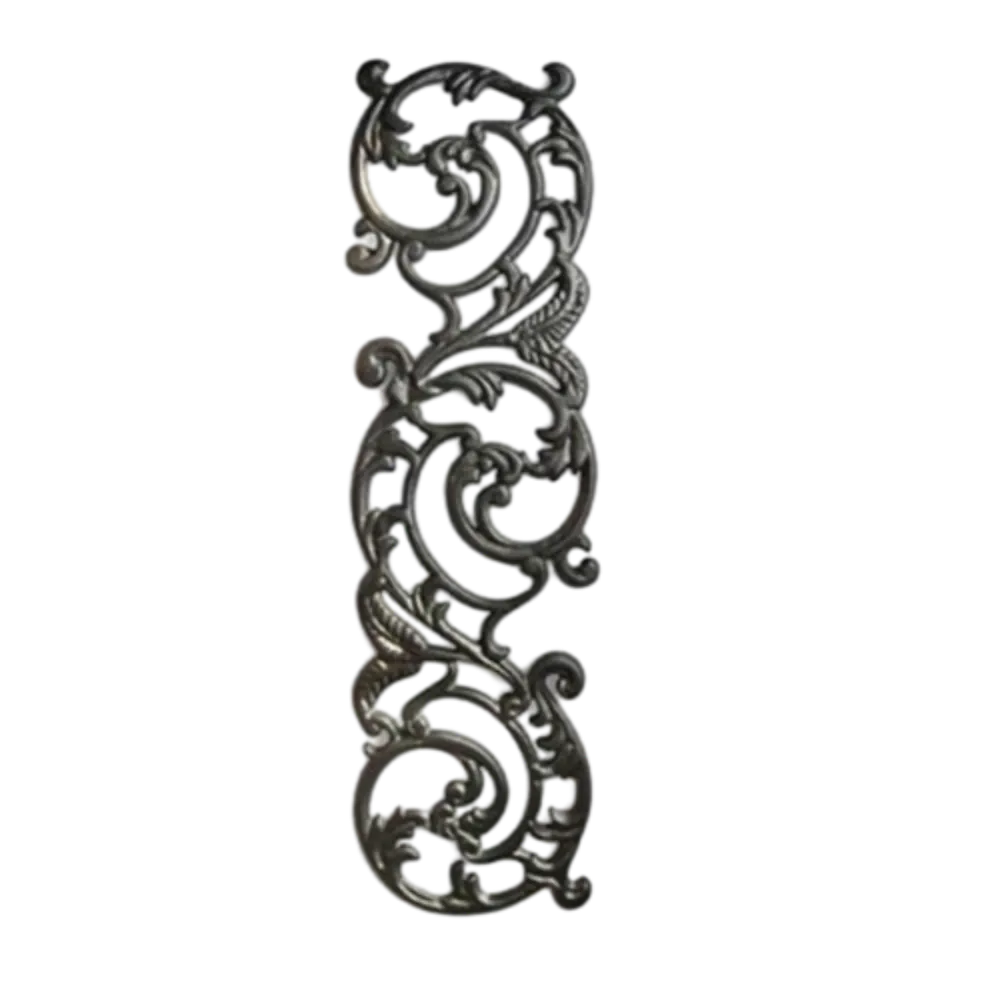wrought iron vs iron
Wrought Iron vs. Cast Iron Understanding the Differences
When discussing ferrous materials, two terms that often come up are wrought iron and cast iron. Although both materials are derived from iron, they differ significantly in terms of composition, structure, properties, and uses. Understanding these differences can help in selecting the right material for various applications.
Composition and Structure
Wrought iron is primarily made of iron with a small amount of carbon, typically less than 0.08%. This low carbon content gives wrought iron its unique properties, as it remains malleable and ductile even at high temperatures. Wrought iron has a fibrous structure, which is a result of its production process. It is manufactured by repeatedly heating and hammering the iron, which helps to form layers of iron and removes impurities.
On the other hand, cast iron contains a higher carbon content, usually between 2% to 4%. This elevated carbon level results in a more brittle material that cannot easily be reshaped or welded. Cast iron is formed by melting iron and pouring it into molds, allowing it to take on various shapes. The structure of cast iron consists of graphite flakes or spheroids, which contribute to its excellent casting properties and ability to hold intricate details.
Properties
The differences in composition lead to varying properties of wrought iron and cast iron. Wrought iron is known for its malleability, allowing it to be easily shaped and forged. This property makes it ideal for applications where flexibility and strength are essential, such as in the creation of decorative gates or railings. Additionally, wrought iron possesses good corrosion resistance, which enhances its longevity.
wrought iron vs iron

On the other hand, cast iron is renowned for its durability and wear resistance. Due to its hardness, cast iron can withstand high temperatures and is often used in cookware, such as frying pans and Dutch ovens. Its excellent wear resistance makes it suitable for machinery components, engine blocks, and heavy equipment, where stress and friction are common.
Applications
The applications of wrought and cast iron are influenced by their respective properties. Wrought iron is primarily used in architecture, art, and decorative items. It is favored for its aesthetic qualities and can be easily shaped into various forms to create elaborate designs. It has a historical significance as well, often seen in traditional blacksmithing and craftsmanship.
Conversely, cast iron serves a more utilitarian purpose. Its ability to hold heat makes it an excellent choice for cooking. Cast iron skillets are beloved by chefs for their heat retention and non-stick properties when properly seasoned. Furthermore, cast iron is extensively used in construction and heavy industries for piping, manhole covers, and machine parts due to its soundness and weight-bearing capacity.
Conclusion
In summary, both wrought iron and cast iron have distinct characteristics and applications that make them valuable in different contexts. Wrought iron, with its low carbon content and malleability, is ideal for decorative applications and forging. In contrast, cast iron's higher carbon content and durability make it suitable for heavy-duty uses and cooking. By understanding these differences, individuals and industries can make informed choices about which material best suits their needs, ensuring functionality and aesthetic appeal in their projects. Whether yourself interested in historical craftsmanship or modern industrial applications, understanding wrought and cast iron forms the foundation of material selection in various fields.
-
Wrought Iron Components: Timeless Elegance and Structural StrengthNewsJul.28,2025
-
Window Hardware Essentials: Rollers, Handles, and Locking SolutionsNewsJul.28,2025
-
Small Agricultural Processing Machines: Corn Threshers, Cassava Chippers, Grain Peelers & Chaff CuttersNewsJul.28,2025
-
Sliding Rollers: Smooth, Silent, and Built to LastNewsJul.28,2025
-
Cast Iron Stoves: Timeless Heating with Modern EfficiencyNewsJul.28,2025
-
Cast Iron Pipe and Fitting: Durable, Fire-Resistant Solutions for Plumbing and DrainageNewsJul.28,2025
-
 Wrought Iron Components: Timeless Elegance and Structural StrengthJul-28-2025Wrought Iron Components: Timeless Elegance and Structural Strength
Wrought Iron Components: Timeless Elegance and Structural StrengthJul-28-2025Wrought Iron Components: Timeless Elegance and Structural Strength -
 Window Hardware Essentials: Rollers, Handles, and Locking SolutionsJul-28-2025Window Hardware Essentials: Rollers, Handles, and Locking Solutions
Window Hardware Essentials: Rollers, Handles, and Locking SolutionsJul-28-2025Window Hardware Essentials: Rollers, Handles, and Locking Solutions -
 Small Agricultural Processing Machines: Corn Threshers, Cassava Chippers, Grain Peelers & Chaff CuttersJul-28-2025Small Agricultural Processing Machines: Corn Threshers, Cassava Chippers, Grain Peelers & Chaff Cutters
Small Agricultural Processing Machines: Corn Threshers, Cassava Chippers, Grain Peelers & Chaff CuttersJul-28-2025Small Agricultural Processing Machines: Corn Threshers, Cassava Chippers, Grain Peelers & Chaff Cutters












